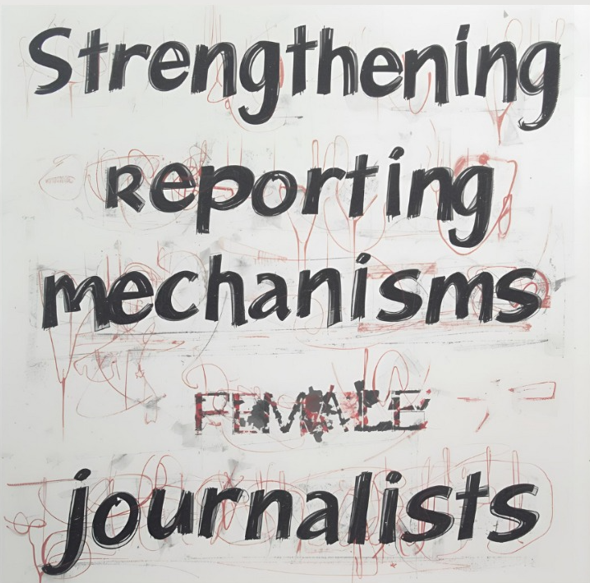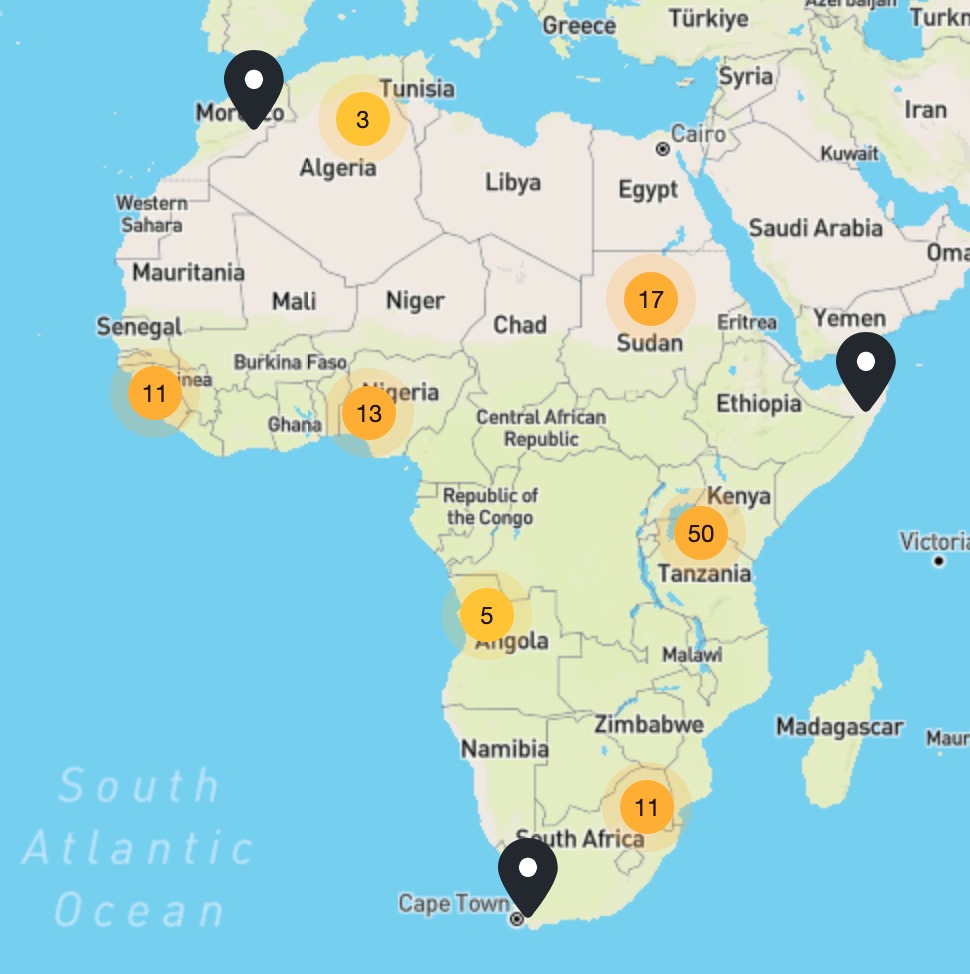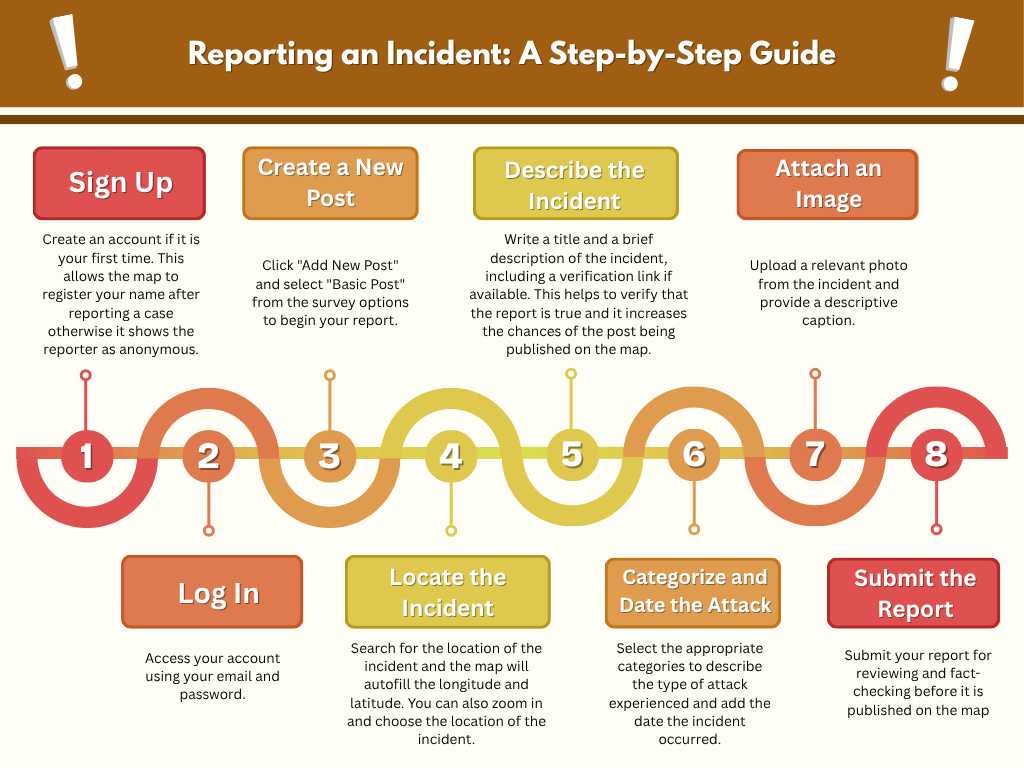The International Association of Women in Radio and Television (IAWRT) Kenya continues to lead efforts toward creating safer online and offline spaces for female journalists, a core mandate of our organization. Speaking during a recent training on monitoring and reporting violations against women journalists, Josephine Karani, IAWRT Kenya chapter head, stressed the importance of documenting such cases accurately. Evidence-building continues to be crucial as without data, we cannot meaningfully influence policy or push for systemic change that ensures women journalists’ safety.
Gendered Risks in Journalism
The session brought into sharp focus the gender-specific threats women face in journalism. Police commissioner Polycarp Ngufor from Cameroon underscored the hostile environment in which many operate. He explained that journalists in Cameroon are often targeted by state security forces, non-state actors, and criminal networks. But for women, these risks are magnified into gender-specific threats such as harassment, assault, and online abuse.
“Female journalists in Cameroon, as well as across Africa, face a distinct set of gender threats that combine traditional risks to press freedom with gender-based violence in both physical and digital spaces,” he remarked.
The Commissioner cited stark cases of female journalists’ harassments, including the 2022 assault on sports reporter Eyong Magdela Bissong, who was attacked by stadium officials and police, and the 2006 abduction of radio presenter Agnes Kalle Indwala. Testimonies further revealed cases where women reporting in crisis zones were threatened with sexual violence, or harassed by male sources demanding sexual favours in exchange for information. These cases, Commissioner Ngufor noted, reflect entrenched power imbalances and systemic impunity that silence women and weaken the media’s watchdog role.
He further pointed out that the consequences of gender-based violence against journalists extend beyond the individual, silencing critical reporting on corruption, women’s rights, and minority issues, while instilling fear in others. Weak legal frameworks, stigma, underreporting, and lack of workplace protections continue to exacerbate the problem. The Commissioner emphasized the need for stronger policy actions, civil society engagement, and the implementation of international human rights standards such as the Maputo Protocol.
Lessons from Iraq: Building Systems to Break Silence
Dhea Subhee from UNESCO, drawing from Iraq’s experience, emphasized how entrenched impunity worsens journalist vulnerability. Between 2006 and 2020, Iraq lost more than 537 journalists to killings by militias, terrorists, and government forces. In response, UNESCO and partners established a national committee on the safety of journalists, which set up special investigation units, media courts, and a transformative digital reporting platform tailored for female journalists, such as the one developed by IAWRT.
“We discovered that female journalists were in complete silence, never raising their voices to report violations. That is why we created a safe platform—so they no longer have to go to police stations, but can instead report directly to trusted bodies who will act on their behalf,” Dhea explained.
In just four years, the platform received more than 5,000 reports, 68% of which involved online threats, blackmail, and sexualized disinformation campaigns. Drawing from Iraq’s model, it is evident that safe, trusted, and independent reporting mechanisms can break the culture of silence.
In just four years, the platform received more than 5,000 reports, 68% of which involved online threats, blackmail, and sexualized disinformation campaigns. Drawing from Iraq’s model, it is evident that safe, trusted, and independent reporting mechanisms can break the culture of silence.
The Call for Collaboration and Legal Action
Other speakers emphasized collective solutions. Rachael Nakitare from IAWRT-kenya raised the painful reality of impunity in cases where journalists are attacked. “Who do we run to for protection?” She asked, highlighting the importance of tripartite agreements between law enforcement, legal practitioners, and media stakeholders. She explained how such frameworks ensure that cases are pursued with urgency and supported by pro bono legal aid when needed.
From a legal perspective, William Oketch representing the Pan African Lawyers Union, emphasized the need for accessible legal aid, media defence funds, and regional guidelines. He explained that in countries like Kenya, lawyers are mandated to dedicate hours to free legal service, which could be directed toward defending journalists. He further called for open-access libraries on media law, threat-tracking systems, and regional advocacy mechanisms. “Journalism is the most sacred profession, and God , whoever the different religions design Him to be was the first Editorial Manager” .
Mr. Oketch reflected. “I encourage all of us, let us not give up, and let us pull together in this partnership for the defence of journalism, and particularly our women journalists who face more harsher realities. We must defend it with all the tools available legal, institutional, and social.”
Towards Safer Spaces for Women in Media
When journalists, especially women, can report safely and have their cases acted upon, societies are better positioned to uphold press freedom and strengthen democracy. From the overview provided by the IAWRT Kenya chapter head, the journey towards enhancing press freedom and journalists safety continues through reporting and monitoring of violation cases. IAWRT’s observatory supported by UNESCO captures cases across all African countries, connecting media workers with legal and enforcement partners. The platform also provides for language localization, enabling users across the globe to interact with it seamlessly.
IAWRT Kenya continues to stand at the forefront of this fight, ensuring that no woman journalist is left voiceless or unprotected. To report a violation, visit the secure reporting platform here: Report a Violation






